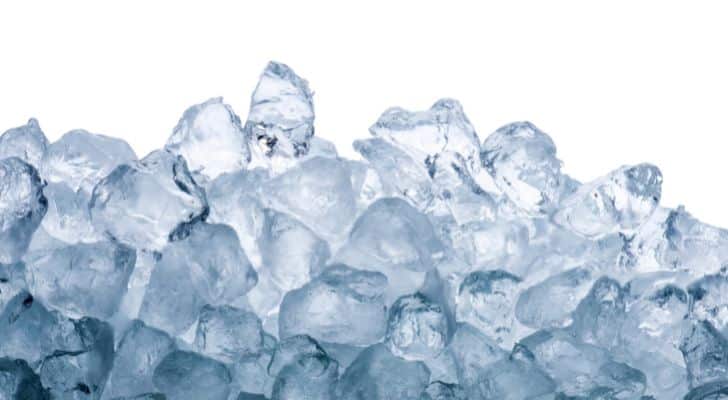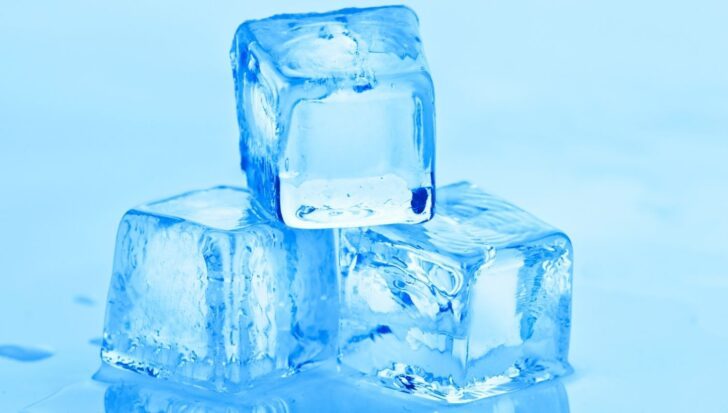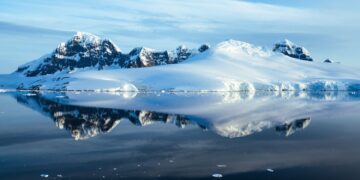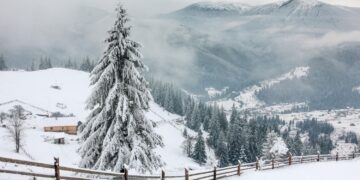Ice is much more than just frozen water. It holds secrets to history, science, and space exploration.
Whether found on Earth or on distant planets, ice is a fascinating substance. Humans and animals have used ice to preserve life and even treat ailments.
Stick around to discover how ice has shaped the environment, ancient civilizations, and innovation around the world. It may even be the key to finding life in space!
The heart shape on Pluto is made of nitrogen ice. The ice vaporizes during the day and freezes at night, causing strong winds to blow ice across the dwarf planet’s surface.
Vikings used ice skates made from bone and leather to get across frozen lakes, a pastime that started at least 4000 years ago.
NASA believes that under the frozen surface of Europa, one of Jupiter’s moons, lies a vast ocean that could harbor life.
Ice was critically important to Civil War doctors. They used it for a number of reasons, including as an anti-inflammatory, a treatment for bedsores, and to reduce fevers.
Saturn’s rings are mostly made of ice, and pieces range from microscopic to as big as a house. The main icy rings are very thin at less than 328 feet (100 meters) thick.
According to one survivor, when the Titanic hit the iceberg, someone suggested a snow fight with some ice that had fallen onto the ship’s deck.
In 1611, a debate was on the question, “Why does ice float on water when ice is itself water?”. The debate boiled down to Galileo saying that ice is less dense than water, which is true, but he still lost the debate.
Ice racing is an exciting sport where drivers use special spiked tires on their cars and motorcycles to race across frozen lakes and ice rinks.
The first ice machine was invented by physician John Gorrie to help cool down his yellow fever patients in 1844.
Frederick Tudor, also known as the Boston Ice King, was the king of the ice trade in the 1800s and shipped naturally forming ice from New England around the world.
The poles of Mars are capped with two different types of ice: carbon dioxide ice (dry ice) on the surface and water ice underneath.
The ice caps on the poles of Mars are so deep that if you spread them over the whole planet, they would still be 115 feet (35 meters) deep.
Scientists have drilled into the ice in Antarctica, finding ice that is around 800,000 years old. The ancient ice contains bubbles that give us clues about past temperatures and what the atmosphere was like.
The famous Ice Hotel in Sweden is rebuilt by artists every winter. The hotel is made entirely out of ice, from the beds to the glasses in the bar!
According to historical texts, the Chinese were the first ice sculptors in 600 BC. However, with the obvious short life of ice sculptures, it’s difficult to know for sure.
Scientists in Greenland are able to track the rise and fall of the Roman Empire in the layers of ice there. Due to Rome’s smelting of metallic ore and the lead pollution that it produced, they were even able to track specific wars in the ice caps.
Taking an ice bath can be dangerous for people with heart conditions, diabetes, and other underlying problems. You should consult your doctor before taking regular post-workout ice baths.
Ice baths after sports are only effective immediately after exercise. They also numb injuries, so be careful not to make your injury worse just because it feels better after ice!
In ancient Greece, Hippocrates prescribed ice and snow in his medical texts as a way to stop bleeding. This works for the same reason ice reduces swelling by constricting blood vessels.
Insane asylums in the 19th and 20th centuries would use ice baths as a “treatment” or means of control for patients with high libido, excitement, and depression.
The unique shape of each snowflake comes from the atmospheric conditions around it when it is formed. Needle-like ice crystals form at 23°F (-5°C), and very flat plate-like crystals at 5°F (-15°C).
Icebergs are mostly compacted snow, making them fresh water, even though they float around the ocean.
One of the largest icebergs ever recorded is iceberg A23A, which broke off of the Antarctic in 1986. The huge iceberg is 1,500 square miles (4,000 square kilometers), but it has recently started migrating to warmer water, shrinking it.
Fire ice, also known as methane ice, is flammable ice that forms in very cold temperatures and high pressures. Once thought to occur only in space, it can be found on the deep ocean floor.
Big frozen lakes usually make an eerie sound in spring and autumn. This is called singing ice, and it happens when cracks form in the ice sheet, making ghostly laser sounds.
Despite being made of ice, igloos can keep people quite warm inside. This is because the air bubbles in the compacted snow blocks act as a thermal insulator, trapping heat inside.
The blue color in ice happens when snow is compacted so much that the air bubbles are squeezed out. The crystals grow, giving the ice its blue color.
Icy stalactites called brinicles form under new ice in the ocean. Saltwater or brine has a much lower freezing point than freshwater, so when columns of very salty water are formed, the less salty water around them freezes.
On frozen worlds like Titan, a moon of Saturn, ice volcanoes erupt with frozen water and other frozen substances. These chilly volcanoes are known as cryovolcanoes.
Wood frogs, found in North America, can come back to life after freezing solid during the winter. The water in their bodies moves away from their organs and becomes ice.
Due to rising sea temperatures and climate change, Greenland loses an average of 270 billion tons of ice yearly, contributing to rising sea levels worldwide.

All over the world and deep into space, it’s clear that ice plays a huge role in the universe in which we live.
Whether it is treating your favorite soccer player on the pitch or preserving secrets deep under Antarctica, ice is seriously cool.
Next time you plop a couple of blocks in your drink or take a nap on your ice bed in Sweden, think about the fascinating frozen world of ice!


















